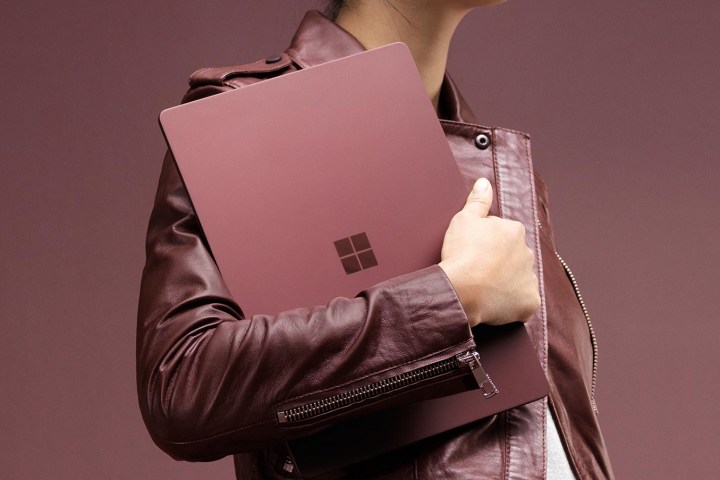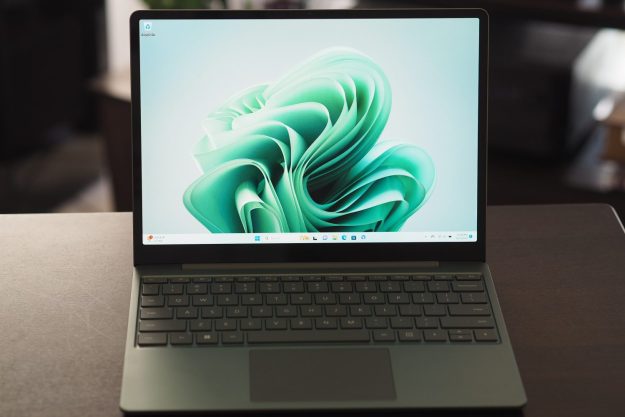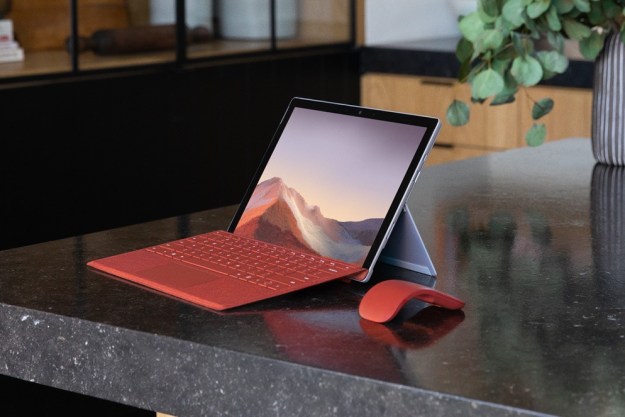
Microsoft first introduced its Surface Laptop in May 2017 sporting a new version of Windows 10 branded with an “S.” Both had students in mind, with the operating system locking app installs to products only served up in the Microsoft Store, and limitations to how end-users can change settings. But the Surface Laptop is more than just a tool for students, and the limitations of Windows 10 S are simply unacceptable in a corporate environment. That’s why Microsoft now offers the Commercial Surface Laptop with Windows 10 Pro.
Comparing the two available Surface Laptops, the only differences reside in the memory amount, color, operating system options, and starting price. The commercial version doesn’t include a 4GB memory option, making its $1,099 starting price slightly higher than the mainstream $999 starting point. The commercial version also doesn’t provide the Graphite Gold color option, but it does offer Windows 10 Pro alongside Windows 10 S as a second OS choice for an additional $100.
Here are the Surface Laptop specifications in case you missed them:
| Operating system: | Windows 10 S Windows 10 Pro (commercial only) |
| Screen size: |
13.5 inches with Touch |
| Screen resolution: |
2256 x 1504 |
| Processor: |
Core i5-7200U |
| Graphics: |
Intel HD 620 (Core i5) |
| Memory: |
4GB (mainstream only) |
| Storage (SSD): |
128GB |
| Sound: |
2x Omnisonic speakers |
| Camera: |
720p with facial recognition |
| Connectivity: |
Wireless N |
| Ports: |
1x USB-A 3.1 Gen1 |
| Battery: |
Up to 14.5 hours |
| Dimensions: |
12.3 (W) x 8.79 (D) x 0.57 (H) inches |
| Weight (starting): |
2.76 pounds |
| Colors: |
Platinum |
| Starting price: |
$999 (mainstream) |
Even if customers purchase the mainstream model, they can still grab Windows 10 Pro as a free upgrade from Windows 10 S until March 31, 2018. But the newer S-stamped operating system might be best for students or other individuals computing in a controlled environment.
The platform’s “S” suffix could essentially mean “secure” or “streamlined,” as Microsoft fine-tuned the platform to squeeze every bit of high performance and battery juice out of the Surface Laptop, and other low-end solutions. The company also focused on security, hence the Microsoft Store app lockdown to prevent students from installing malicious software.
“[Apps] are first verified for security, and then locally each run in a safe ‘container,’ ensuring consistent performance and security for the system,” the company says. “Windows 10 S customers will be protected from malware by default with Windows Defender and can use additional antivirus software available in the Windows Store if they choose.”
But with Windows 10 Pro, you can install any app or desktop software you want. That means you can use your favorite non-Microsoft browser, antivirus software, and PC games distributed on Steam. But it’s not streamlined for low-end machines, and it packs enterprise-friendly features students can live without. According to Microsoft, once you upgrade to Windows 10 Pro from the slimmer “S” version, there’s no turning back.
To configure the Surface Laptop with Windows 10 Pro installed right out of the box, order from Microsoft here.
Editors' Recommendations
- Surface Pro 10: all the major changes rumored for the new model
- Surface Pro 10 and Surface Laptop 6 have arrived — with a catch
- The Surface Pro 10 sounds amazing, and it may be coming soon
- Microsoft plans to charge for Windows 10 updates in the future
- This sleeper Asus laptop is faster and cheaper than Microsoft’s Surface Laptop Go 3


